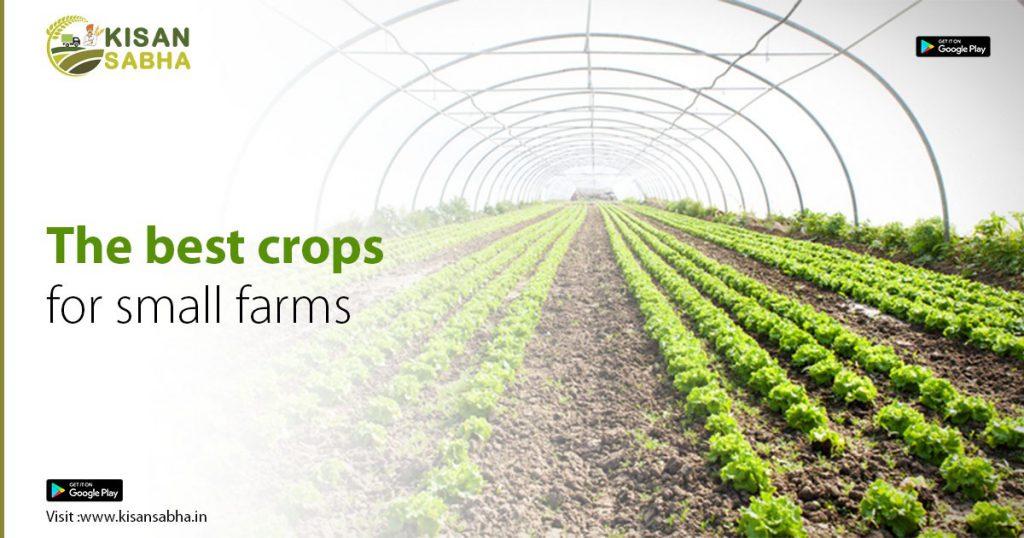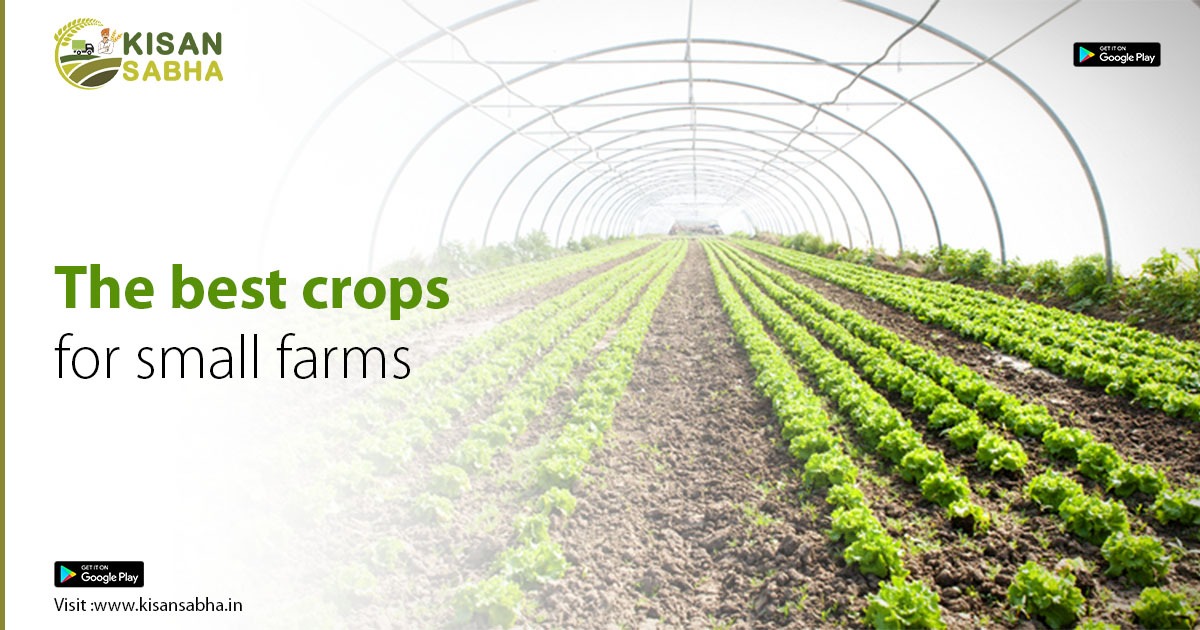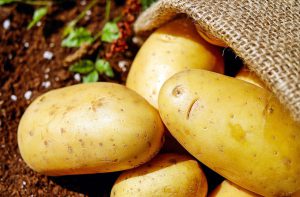You may have heard that growing a few successful crops today allows many people to support themselves. You want to join the tribe as well, but you can’t because you don’t have access to a place where you can raise food sustainably. Smaller farms can grow the most profitable crops. You may begin by doing it in your backyard.
Farmers typically plant the finest cash crops more for commercial purposes than personal use. These crops are also known as cash crops. Among the most popular and profitable cash crops are corn, wheat, cotton and soybeans.

These crops are usually grown in large quantities and frequently require specialised instruments or chemicals in order to improve productivity. The best aspect is that everyone can cultivate these economically advantageous crops, even in very small spaces.
Most of the time, farmers select the plant to be produced based on its profitability and marketability. Crop and variety selection is the first step in starting or developing a farm. Making the right decision when selecting the plants to grow can ultimately lead to a successful farming venture.
Factors to take into account when selecting the kind of cash crop plants to grow:
Examining the geography, biotic variables, and climate in great detail is essential. The word “biotic factor” describes live organisms such as weeds, ruminant animals, insects, and other pests. The topographic aspects of the soil, such as height, slope, and topography, as well as its physical and chemical properties, such as texture, colour, the amount of organic matter, pH, and fertility levels, will determine the crops that are best suited to it.
Farmers should determine the crop and variety to be grown based on how well they will respond to the current farm circumstances. Seeking advice from local farmers currently cultivating the same crops in the area is essential.
While selecting profitable cash crop plants to produce, it is crucial to consider the marketability and financial viability of the plant. In simple terms, the selected crop must have a high yield.
Before selecting the crop for your farm, you should be aware of its technological and business implications.
You must decide on your farming approach. Whether you decide to raise only crops or both crops and cattle.
Security is another aspect that needs to be carefully taken into account. You must prevent
robbers from accessing the crop.
Want to use your small piece of property to make more money? The most lucrative crops to grow are these:
Herbs and spices:
The world of herbs and spices is intriguing because each one has a distinct flavour and benefits. The consumption of fresh herbs for cooking, medicinal purposes, and value-added herbal products including soaps, candles, teas, and bath oils has increased dramatically in recent years. Fresh culinary herbs are highly sought after by grocery stores and restaurants. Many growers supply both new and returning customers at the Saturday farmer’s markets. A well-liked value-added service is a 4-herb windowsill-size “instant” herb garden that is available for harvesting. Others find that dried culinary herbs sold in sachets at farmer’s markets are popular.
With so many alternatives, including a wide range of ethnic herbs for serious cooks, growers can profit with fresh herbs.
Lavender:
Small growers can achieve above-average profitability with lavender due to its adaptability. Growers can either make lavender oil from the fresh flowers or sell the flowers in bundles. Drying the flowers for sale to florists and artisans for wreaths and floral arrangements is a straightforward process. Furthermore, lavender offers opportunities for value-added products such as sachets, herbal pillows, aromatherapy products, and skin care items like soap. Growing lavender is appealing because it allows for minimal waste.
Gourmet Garlic:
There can be substantial advantages for individuals who produce “gourmet” garlic. Gourmet garlic comes in three different kinds and is also referred to as hard neck garlic. Garlic, one of the most lucrative crops, generates returns of about Rs. 1.6 lakh per acre. It needs a variety of temperatures for growth, from chilly and moist to warm and dry, and it takes over 130 days to produce. It is typically planted in Madhya Pradesh, Gujarat, Maharashtra, and other regions. Small-scale farmers are especially urged to grow it.
Gourmet Mushroom:
Mushrooms are another crop that has enormous advantages. It usually takes 4-5 months to yield and costs between Rs. 25 and 30,000 per acre. Oyster and shiitake mushrooms are the two most popular varieties, and oyster mushrooms in particular can produce returns of Rs. 3-3.5 Lakhs per acre. Mushrooms are a great speciality crop for urban farmers due to their indoor cultivation and high return on area.
Coriander:
Coriander is another key crop that is often overlooked. It has a high market demand and produces results in just 45 days, making it an excellent crop for small growers. Because it can only withstand frost, it is usually planted in dry, cool climates. It produces returns of Rs. 50-60,000 per acre while costing only Rs. 8-12.
Conclusion:
Small farmers must consider numerous considerations while selecting crops. How much does one acre of planting cost? How long will the crop continue to produce? Are there numerous or little labour requirements? Is the crop in short supply? Is the crop susceptible to a late or early frost?
Farming requires a certain amount of risk acceptance.. Fortunately, small farmers, unlike industrial farmers, can typically diversify their income by growing a diverse range of crops on a single plot of land. Small farmers can benefit greatly from the 16 intriguing crop options in the list below.
Rather than requiring proper, large-scale, professional farms, farming merely requires the most profitable crops to develop.
The key to achieving the best harvests and making a long-term profit, whether you’re a beginner farmer or a seasoned veteran with years of expertise, is to follow this basic general rule.
Visit us – www.kisansabha.in





